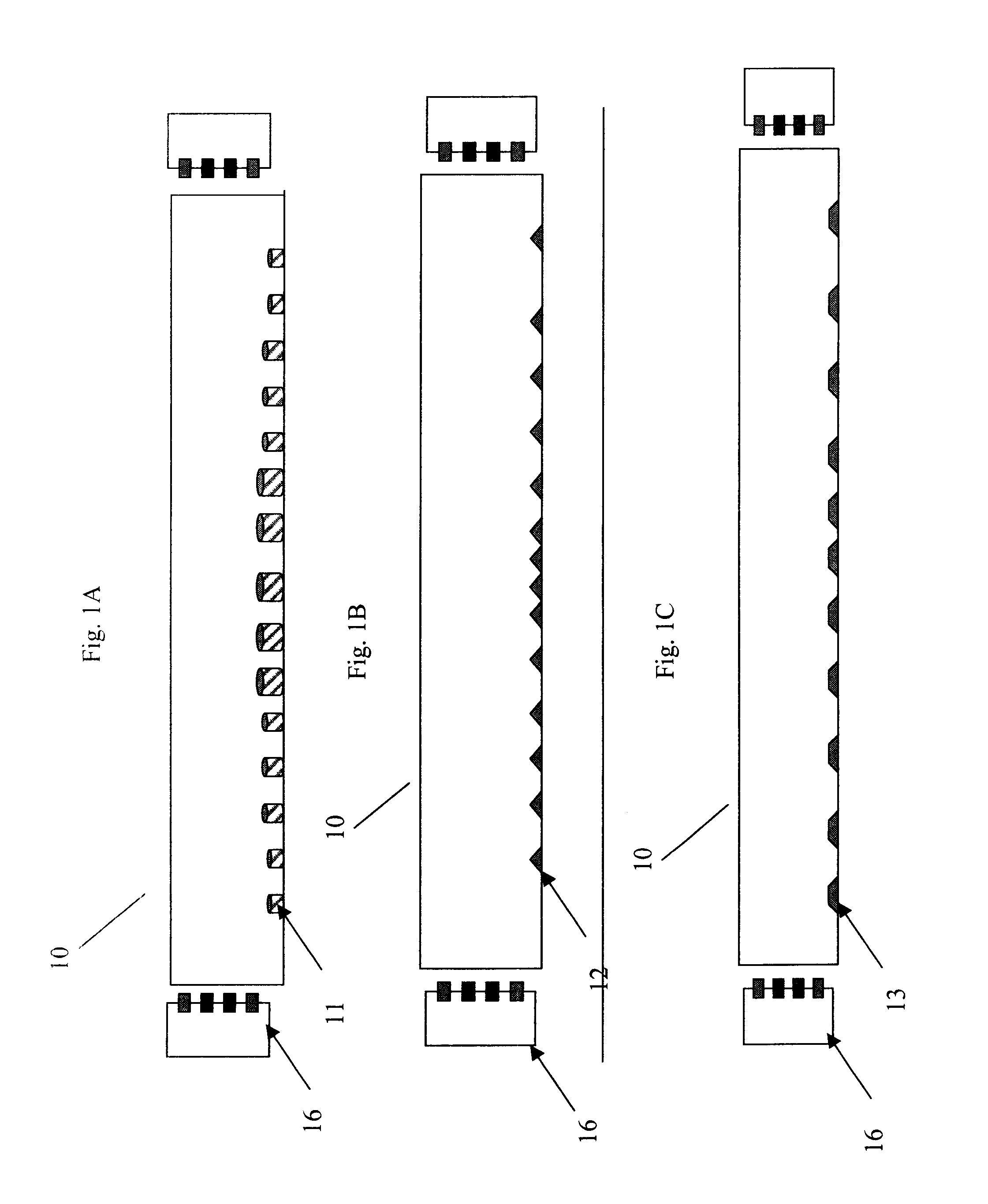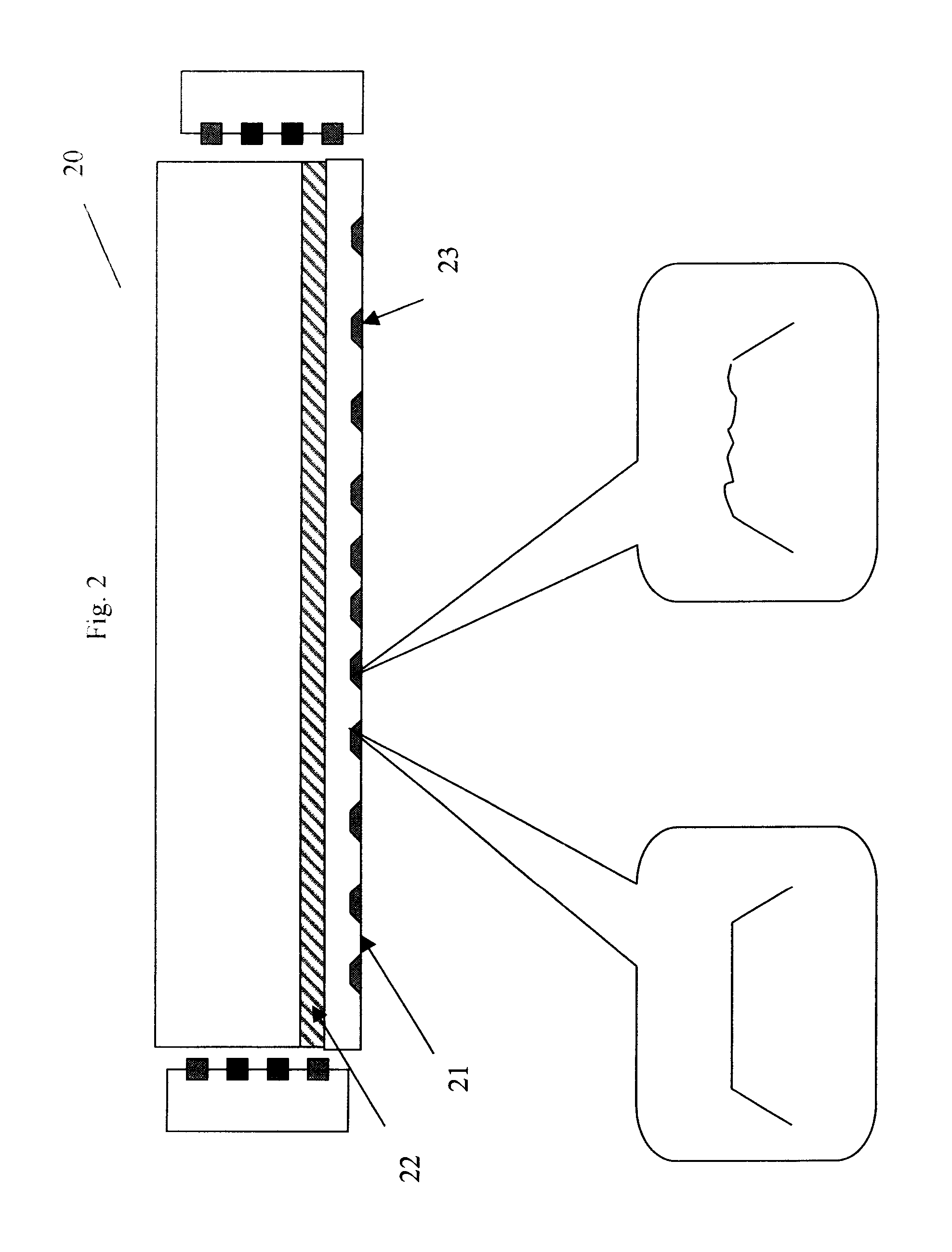LCD displays with light redirection
a liquid crystal display and backlight technology, applied in lighting and heating equipment, manufacturing tools, instruments, etc., can solve the problems of prone to warping in manufacture, less and less desirable conventional flat panel backlight solutions using side-mounted ccfls, and insufficient image quality of lcd displays
- Summary
- Abstract
- Description
- Claims
- Application Information
AI Technical Summary
Benefits of technology
Problems solved by technology
Method used
Image
Examples
embodiments
[0058]FIGS. 1A, 1B and 1C are side view cross sections of solid lightguide 10 with a series of holes or indents 11, 12 and 13 that are formed in the non-view side. The lightguide may be lit from one or both ends by light source 16. If lit from one end only, there may be a reflector on the end opposite the light source. The holes or indents may be any shape or size or may vary in shape and or size as a function of distance from the light source. In some embodiments the holes have the same relative size in the width and length dimensions. The features in general may be in the 1-300 micron size range in their depth although larger or slightly smaller may be desirable. The features are useful in scattering light and redirecting it towards the view side of the lightbar. The lightbar may be flat, tapered, round or other shape or compound shape. There may be a light mixing section to provide improved light mixing uniformity. The spacing, density, size and shape may be varied to provide uni...
examples
Sample 1
[0077]One embodiment uses an acrylic elongated illuminator with a nominally ¼ in. square in cross section. The elongated illuminator is highly transparent and has an optical finish on all sides and ends. To form the elongated illuminator bar stock of PMMA (0.25″×0.25″×14 inches was optically polished on a lathe and then hand polished with a slurry of fine grit to obtain a surface Ra of less than 25 nm. on the sides and on the light input end. The backside or non-view side of the bar was drilled with a pattern of holes to provide the desired light redirection. The holes were drilled to an approximate depth of 100 microns. The initial section from the light input section was not drilled. There was a section that was approximately 10-15 mm that had no holes. This section served has a color mixing section.
[0078]An LED array is used as light source. Multi-die RGB LEDs are mounted in close proximity to the light input end. These multi-die LEDS consist of 1 red, 1 blue and 2 green ...
PUM
| Property | Measurement | Unit |
|---|---|---|
| refractive index | aaaaa | aaaaa |
| depth | aaaaa | aaaaa |
| depth | aaaaa | aaaaa |
Abstract
Description
Claims
Application Information
 Login to View More
Login to View More - R&D
- Intellectual Property
- Life Sciences
- Materials
- Tech Scout
- Unparalleled Data Quality
- Higher Quality Content
- 60% Fewer Hallucinations
Browse by: Latest US Patents, China's latest patents, Technical Efficacy Thesaurus, Application Domain, Technology Topic, Popular Technical Reports.
© 2025 PatSnap. All rights reserved.Legal|Privacy policy|Modern Slavery Act Transparency Statement|Sitemap|About US| Contact US: help@patsnap.com



